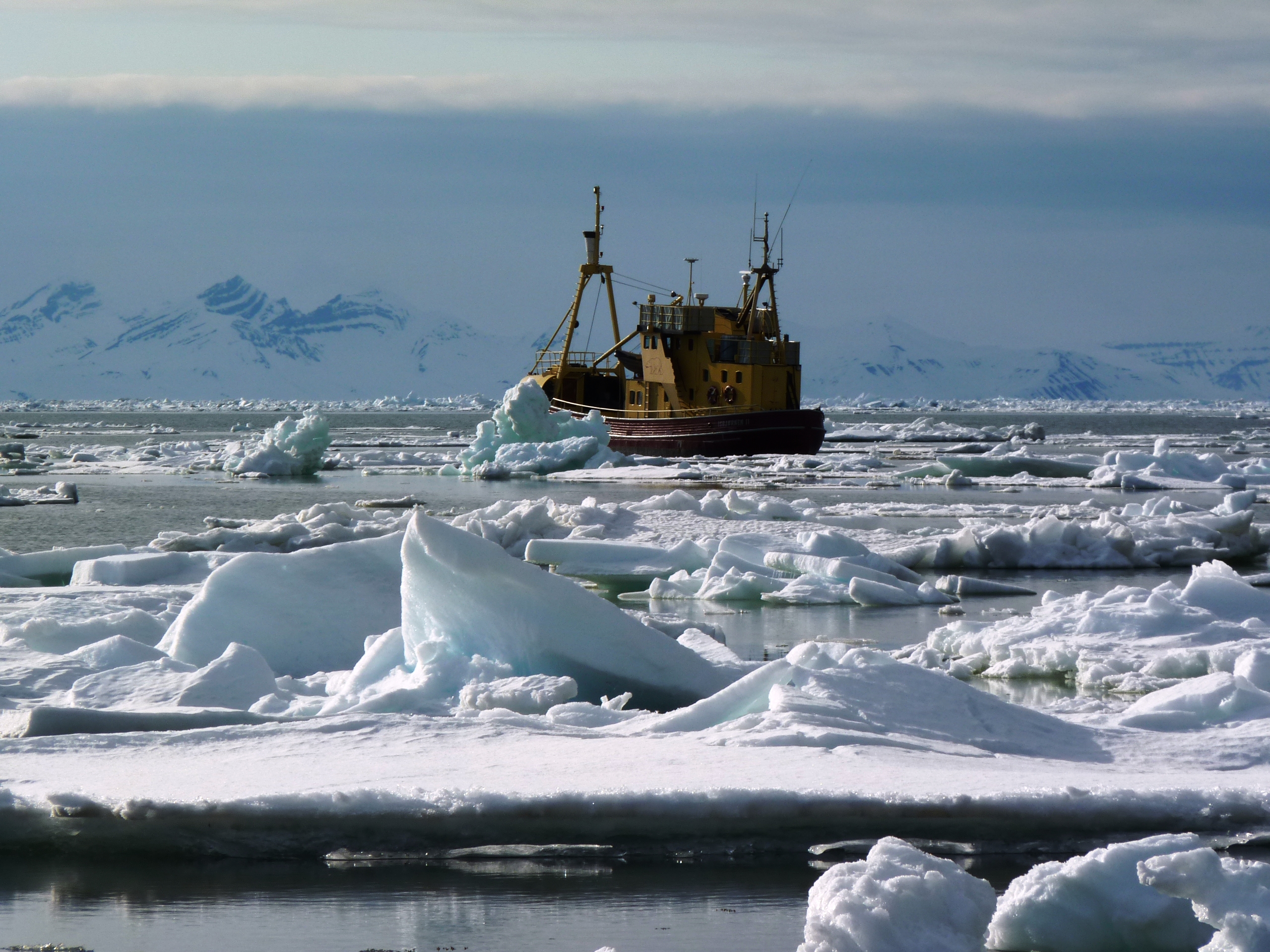Search Results for Tag: AWI
North East passage opening up early this summer?
The North-East passage, the sea route that goes along the northern coast of Russia, looks as if it will be free of ice at a very early stage this summer, according to scientists from Germany’s AWI, Alfred Wegener Institute for Polar and Marine Research. Towards the end of last winter, the scientists found large areas of the Laptev Sea covered by ice which was only a maximum of 50 cm thick. This, they say, is unlikely to last long once the summer sun comes out. Previous measurements in 2007/2008 had recorded ice thicknesses of up to a metre around the same place . Dr. Thomas Krumpen, the expedition leader, said the team has been surprised by the measurements, taken by a special ice-depth sensor dangled from a helicopter. Dr. Krumpen says the wind is probably responsible. When the wind is blowing from land out on to the sea, it forces the pack ice from the Laptev Sea northwards. This leaves open areas of water at the coast, which cool out fast and form thin ice. But the scientists were not previously aware that the areas could be this big. In some places they flew a good 400 kilometres over thin ice. The team want to use the measurements to calibrate satellite data.
More information on the AWI website, but I’m afraid the English version of this story doesn’t seem to be available yet.
Arctic Ice and our Weather
Apologies for a long spell of ice-blog silence, but your ice blogger is now back on the
(snow?-) ball.
The German papers today tell us to expect temperatures dropping to as low as MINUS 20 C in the course of this week. After a relatively mild winter so far, this will be a shock to the system for a lot of people. And of course, we’ll be back to the old discussion about how it can be this cold when the world is warming… Somehow people are more willing to accept that the climate is changing when the plants are all starting to come up ahead of time. But maybe the cold snap will help draw attention to a new study by Germany’s Alfred-Wegener Institute explaining the connection between the extent of the Arctic sea ice in summer and our winter weather in central Europe.
![]() read more
read more
Geoengineering – the “Plan B”

(Photo: Prof. Thomas Pettke, Institute for Geology, University Bern)
Cough pastilles? Ingredients for your Christmas baking?
No, these green crystals, which can be up to a centimetre in size, are actually olivine, the major constituent of the earth’s mantle.

This is what it looks like in vulcanic rock, in this case from Mount Erebus in Antarctica. (Photo by Hannes Grobe, Alfred Wegener Institute).
So what is the green rock doing on the ice blog? Well when olivine weathers and decomposes, it can remove carbon dioxide from the atmosphere. Scientists have been conducting experiments to find out how much, and whether artificially weathering the mineral could help counteract ocean acidification.
Researchers from the Alfred Wegener Institute for Polar and Marine Research in the Helmholtz Association and the KlimaCampus of Hamburg University have just published some model calculations. They say around a ton of olivine dissolved in water would be necessary for each ton of CO2 that could be transferred from the atmosphere to the ocean using this method.They assume the method is not suitable to neutralise present-day greenhouse gas emissions completely, but could be interesting on some scale as just one factor of many.
The Alfred Wegener Institute stresses it is not out to pave the way for the commercial implementation geoengineering measures with this research. “It makes an important contribution to improving the scientific database on geoengineering methods,” says Prof. Karin Lochte,the Director of the Institute.
Given the lack of progress on the large-scale emissions reductions that would be necessary to keep global warming to the 2 degree target, it’s hardly surprising that there is a strong interest in techniques like geo-engineering, whether it be installing mirrors in space or measures like this one.
Of course there are plenty of risks involved. The recent Biodiversity Conference in Nagoya, Japan, called for more information to help assess the potential effectiveness and the risks of geoengineering to the environment and biodiversity.
There’s more detail on all this on the AWI website
No respite for the Arctic sea ice

(Sea ice off Greenland 2009)
In between discussing the role of the media in communicating climate change at the Global Media Forum here in Bonn and producing radio and online stories from my Arctic trip, I have just read a press release from the Alfred Wegener Institute for Polar and Marine Research (AWI)I’d like to mention here.
It doesn’t really surprise me, but it concerns me to read that the Arctic sea ice is expected to reach a critical minimum again this summer, although probably not the shock low of 2007.
AWI scientists and a team from Hamburg University’s “climate campus” have published figures in the Sea Ice Outlook looking at the forecasts for the ice cover in September (the month when it reaches its minimum) made by a dozen international research institutes. The Hamburg team and the AWI team come to different results, using different methods, but both agree there’s an 80% probability that the ice area will be between 4,7 und 5,7 million km2. Just for comparison, between 1980 and 1990, it always covered more than 7 million km2.
From the horse’s/ scientist’s / environmentalist’s mouth
Mark Mattox has also been following this saga closely and conducted interviews both with the AWI and the ETC for this week’s edition of Living Planet, now available online.
Interview with Ulrich Bathmann, AWI
Interviw with Jim Thomas of the ETC






















Feedback